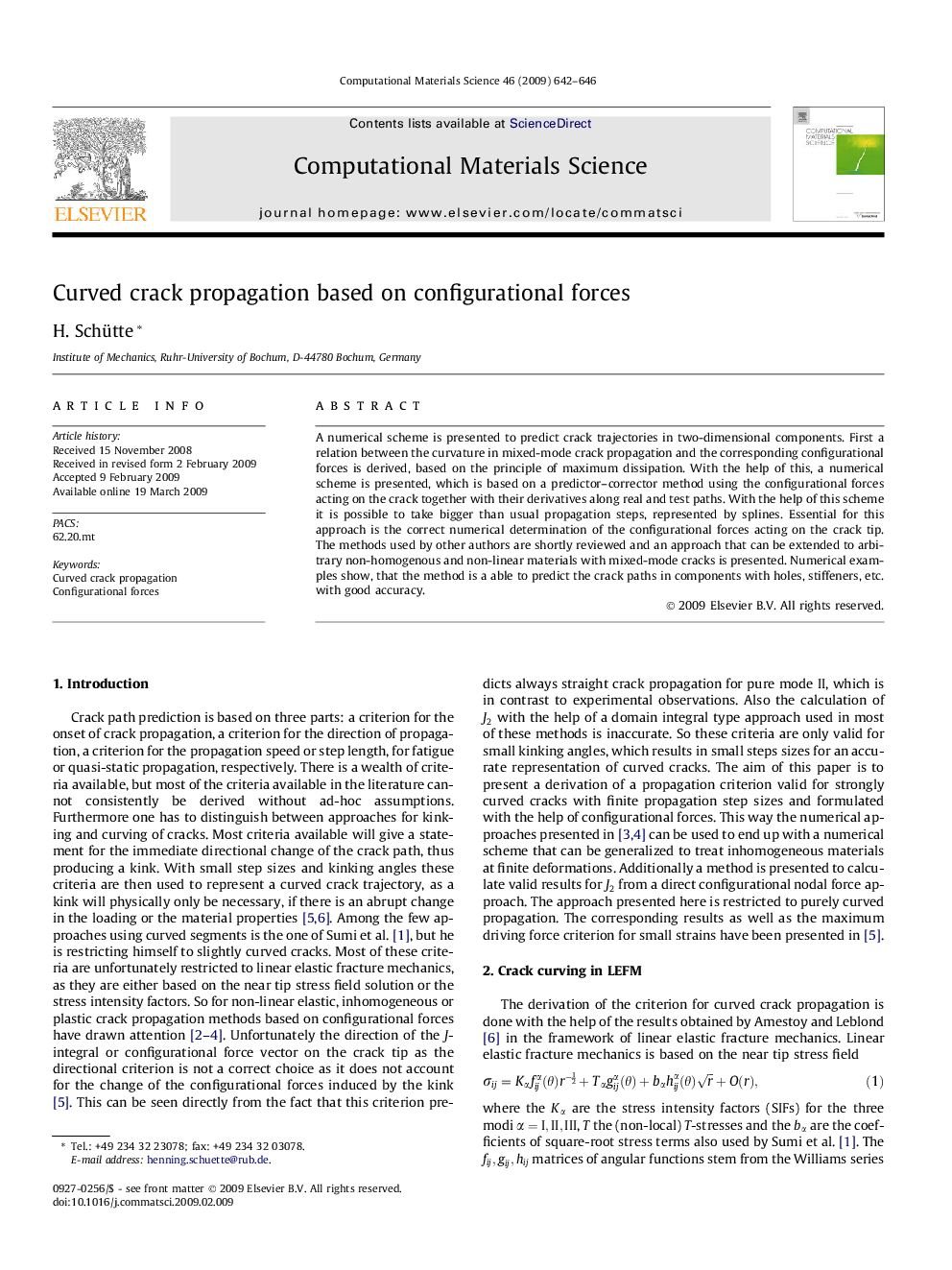| Article ID | Journal | Published Year | Pages | File Type |
|---|---|---|---|---|
| 1563090 | Computational Materials Science | 2009 | 5 Pages |
A numerical scheme is presented to predict crack trajectories in two-dimensional components. First a relation between the curvature in mixed-mode crack propagation and the corresponding configurational forces is derived, based on the principle of maximum dissipation. With the help of this, a numerical scheme is presented, which is based on a predictor–corrector method using the configurational forces acting on the crack together with their derivatives along real and test paths. With the help of this scheme it is possible to take bigger than usual propagation steps, represented by splines. Essential for this approach is the correct numerical determination of the configurational forces acting on the crack tip. The methods used by other authors are shortly reviewed and an approach that can be extended to arbitrary non-homogenous and non-linear materials with mixed-mode cracks is presented. Numerical examples show, that the method is a able to predict the crack paths in components with holes, stiffeners, etc. with good accuracy.
